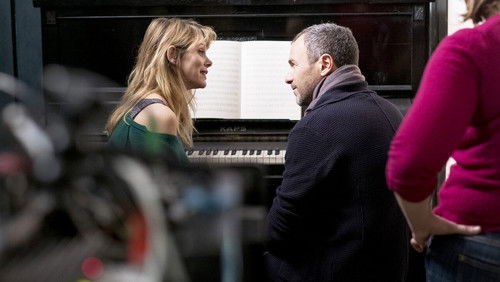La donna del lago (1965)
23KLa donna del lago: Directed by Luigi Bazzoni, Franco Rossellini. With Peter Baldwin, Salvo Randone, Valentina Cortese, Pia Lindström. While visiting a resort town during off-season, a writer investigates the apparent suicide of a woman he was infatuated with.
“Some people consider this a proto-giallo. It kind of is, in the same way The Girl Who Knew Too Much resembles a giallo, actually itu0026#39;s a u0026#39;woman gone missingu0026#39; mystery shot in black and white where a lot of the usual giallo tropes are absent for the simple reason they had not been mapped down yet; the same movie made ten years later would have probably been shot in garish Technicolor, the murders would take place on screen and weu0026#39;d be treated to the black-gloved hand of the murderer. A lot of common giallo themes can be found here though, sexual obsession, distorted memory, a chain of events is unlocked when a character visits a place of his past, the boundaries between reality and fantasy/madness blurred by something that may or may not be a product of the mind, yet Iu0026#39;d place the movie closer to the psychological horror Polanski was yet to do than Mario Bava, or a movie that would influence the gialli of Sergio Martino more than those of Dario Argento.u003cbr/u003eu003cbr/u003eIf you take it apart to study the parts it was made of, youu0026#39;ll find a lot of familiar ideas reconfigured together in similar ways in other movies. This is the type of movie where a fiction writer (who is u0026quot;dead insideu0026quot; by his own admission) arrives at a remote town by a lake to look for a girl who presumably committed suicide a year ago, the town streets are empty and thereu0026#39;s talk of a family harboring a u0026quot;terrible secretu0026quot;, the writer stays at an old hotel where according to the suave-creepy owner u0026quot;heu0026#39;s the only residentu0026quot; because itu0026#39;s off-season, at some point a photo of the dead woman is presented that throws a new light into the situation, and thereu0026#39;s a mysterious slaughterhouse behind the hotel that looks like the abandoned warehouse Nosferatu hauls his coffin to in Murnauu0026#39;s 1922 film.u003cbr/u003eu003cbr/u003eThe movie does a lot of something I find annoying: a scene where people behave in odd ways or has a certain kind of offbeat atmosphere plays out and then we cut to a shot of the writer jolted awake in his bed back at the hotel. Bazzoni is a little too quick to point out u0026quot;DREAM SCENE!!u0026quot; to his audience, a little too quick to reassure the viewer that u0026quot;this part that didnu0026#39;t make sense wasnu0026#39;t really supposed tou0026quot; so that as the movie begins to morph into something else weu0026#39;re lulled back to the safe environment of the genre picture, where the protagonist can narrate his thoughts in voice-over and where u0026#39;dream sceneu0026#39; appears to be the directoru0026#39;s way of saying u0026quot;I want to shoot with the whites washed outu0026quot;.u003cbr/u003eu003cbr/u003eBut even that is not what it seems, because at some point we get the flashback of a memory of something that happened in one of the writeru0026#39;s previous stays in the hotel, the writer walks up the stairs and spies on a love scene between the dead woman and a man he canu0026#39;t identify, and we get extreme closeup shots of an eye watching this through a keyhole. Later this memory is expanded upon in the writeru0026#39;s mind and what we saw at first suddenly takes new meaning so that the love scene may had not been a love scene and the victim may had not been the victim after all, but it doesnu0026#39;t become clear whether this is a repressed memory unlocked by circumstance or a wish fulfillment dream, the writer furnishing a twisty conclusion worthy of one of his pulpy books to an incident that remains unexplained and ambiguous like most real life situations usually are. Fittingly this new twist feels very film noir, deceit and greed is involved and for a moment the moral universe of the film is turned on its head.u003cbr/u003eu003cbr/u003eThis is what I take from the Lady of the Lake, like the blurry photo that is only a magnified detail of a larger frame, the sense of mystery partially revealed to us for a moment then withdrawn from our eyes again. Now the mystery is ours, literally to inhabit the memory. Or better yet, thereu0026#39;s a strange melancholy woman in a white coat who walks by the beachwalk every night by herself and we watch her stroll under the lamp posts from the window of our hotel room. One morning sheu0026#39;s found dead and if only weu0026#39;d have gone down there to talk to her while there was still time.u003cbr/u003eu003cbr/u003eNear the end the movie shifts from eye-level Shining track shots of hotel corridors to vertical shots of the protagonist going down a spiral staircase, the whole geography is now inverted, and weu0026#39;re invited inside the mysterious slaughterhouse for the big reveal. There we get portrait shots steeped in shadow and claw-like hands emerging in silhouette from behind a white glass panel. Itu0026#39;s all a bit like weu0026#39;re seeing the seedy industrial locations of Tetsuo through the wintry viewfinder of Sven Nykvyst, or like fetish filmmaker Maria Beatty had brought her inky blacks to the glowy diffused whites of Funeral Parade of Roses.u003cbr/u003eu003cbr/u003eFor the end the movie feels the need to explain itself and provide a definitive conclusion, with the villain recounting the whodunit details to the protagonist, and then in very melodramatic fashion a crazed woman is running down the beach, arms flailing wildly. The Italo-horror fan will savour the whole thing start to finish, but thereu0026#39;s enough surreal oddity here to make even the Last Year at Marienbad crowd sit down and take notice.”









